The Mirror
This artifact is the first project I cooperated with others in the IMA field, and though we met many problems, we gained so much fun as well, and all of us had a strong sense of achievement after our performance ended!
We met each other for the first time on September 16th to decide our theme. All six of us pasted our ideas of interactive artifacts to a google document and read together to choose the most creative one. It also had to be easy enough to be carried out, besides, we all wanted it to have some deeper meanings that can intrigue the thoughts of people. We all agreed on the idea of The Mirror, which was raised by one of our group members called Nicole. In her opinion, the mirror can act as an interactive artifact which can detect the happiness of the citizens of Omelas, and turn to its reverse side every time it detects happiness or content from people. On its reverse side it shows the truth of the city which lies underground – “all our joy, the nobility of our architecture, the poignancy of our music, the profundity of our science” are all built on the precondition of one little boy’s pain. He is locked in an underground basement with no windows, and has neither sufficient food nor clean water. He can neither have the freedom to go out nor receive anything else despite this cramped basement and those disgusting food, for as long as he is painful, people in Omelas can be happy and lead a carefree life. We found the mirror creative, for it was not restricted in the physical form of interaction, instead, it detected positive feelings automatically and intrigued people’s thoughts to raise public attention and brought about their reactions. The interaction of this mirror was more on a spiritual level. Besides, it was easy to be carried out , for what we needed was only a painted mirror, and as the paint was already provided by school, all we had to do was to buy a double-faced mirror on Taobao. Finally and most importantly, the mirror was really meaningful, for it could not only raise thoughts among the citizens of Omelas, but also intrigue our thinking on what unfair things are still happening on our planet and what unfair and harmful effects we have had on the third world countries in the process of developing ourselves.
During our second meeting, we made a detailed plan about this project and the different role and work of each person. We set two main goals: to buy the needed materials and to finish the script. After a heated discussion, we decided that there should be 7-8 main characters in the play, and this number was appropriate for all six of us to actively participate in. Then, we distributed the characters so that everyone could be familiar with their own parts. After that, we picked people who can paint to work on the painting on the reverse side of the mirror, and gave the others the task of making necessary handicrafts by cardboard so that our performance can be enriched and visually nicer. Finally, we made a list of the necessary materials and made plans to get all of them. One of our group members, Roman, said she could take the task of writing the script. Up till now, we had made a clear plan and formally began our work.
Interaction Lab Plans for 9.18
During the following week, all six of us were busy doing our work. I myself was engaged in buying the mirror and the painting of the mirror, but I also helped other people to build some handicrafts in the cardboard workshop hosted by our school. Thus, on a Tuesday evening, we met each other in N406 and started making one of our most important tools and handicrafts — a horse. The horse symbolized the identity of the horse rider and could make our performance more interesting. After listening to the instructions given by our professor, we set out to make the creative horse ourselves!
Firstly, we drew an outline of the horse and cut the cardboard in an appropriate shape. This enabled us to have a basic idea of the size and appearance of the horse.
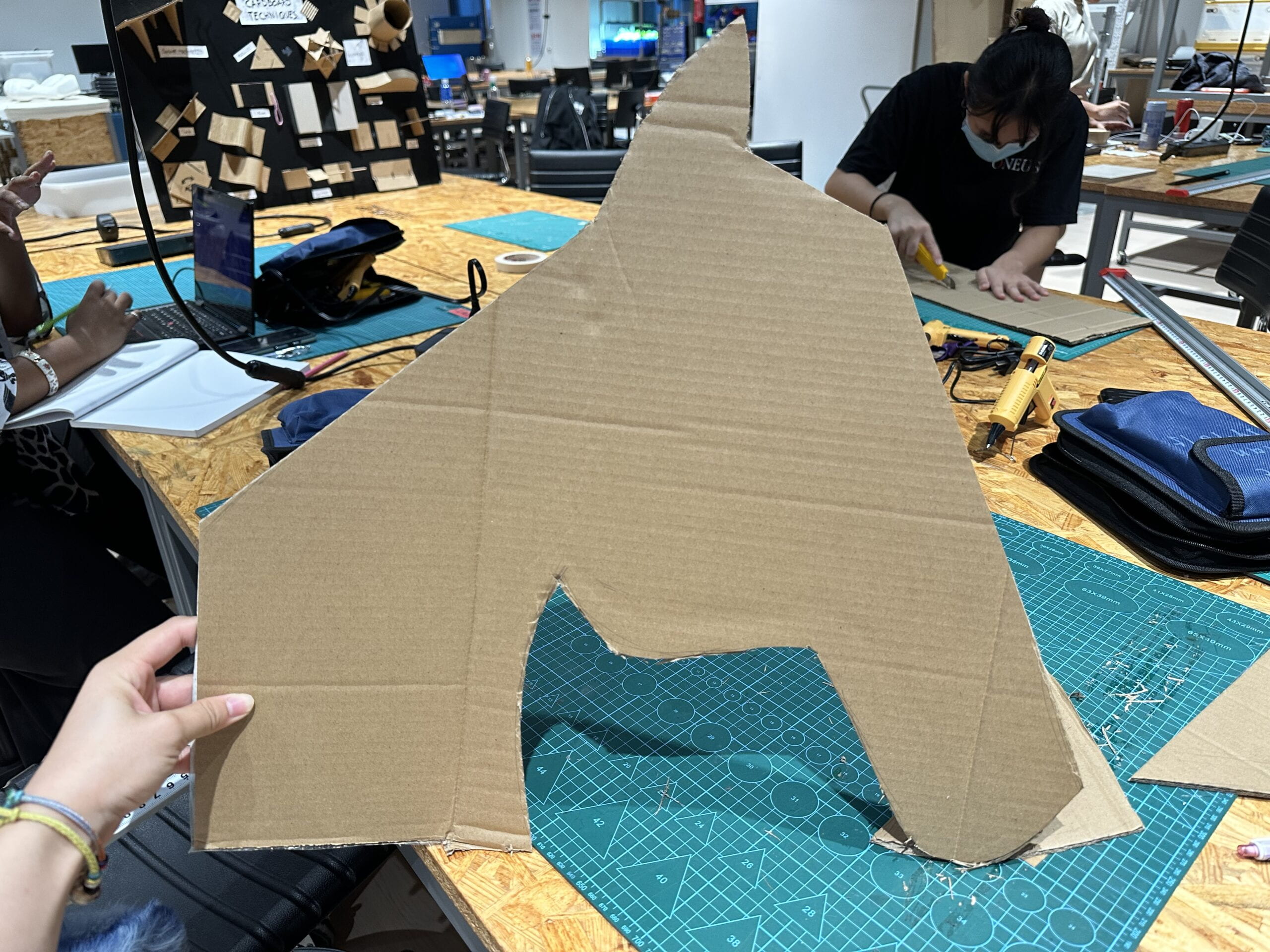
Secondly, we drew the eyes of the creature and assembled different parts of the handicraft together. One innovative approach that we made was to make a spindly cylinder and connect it to the head of the horse instead of building its whole body. This could make it easier to be held by a hand and took less time to finish.
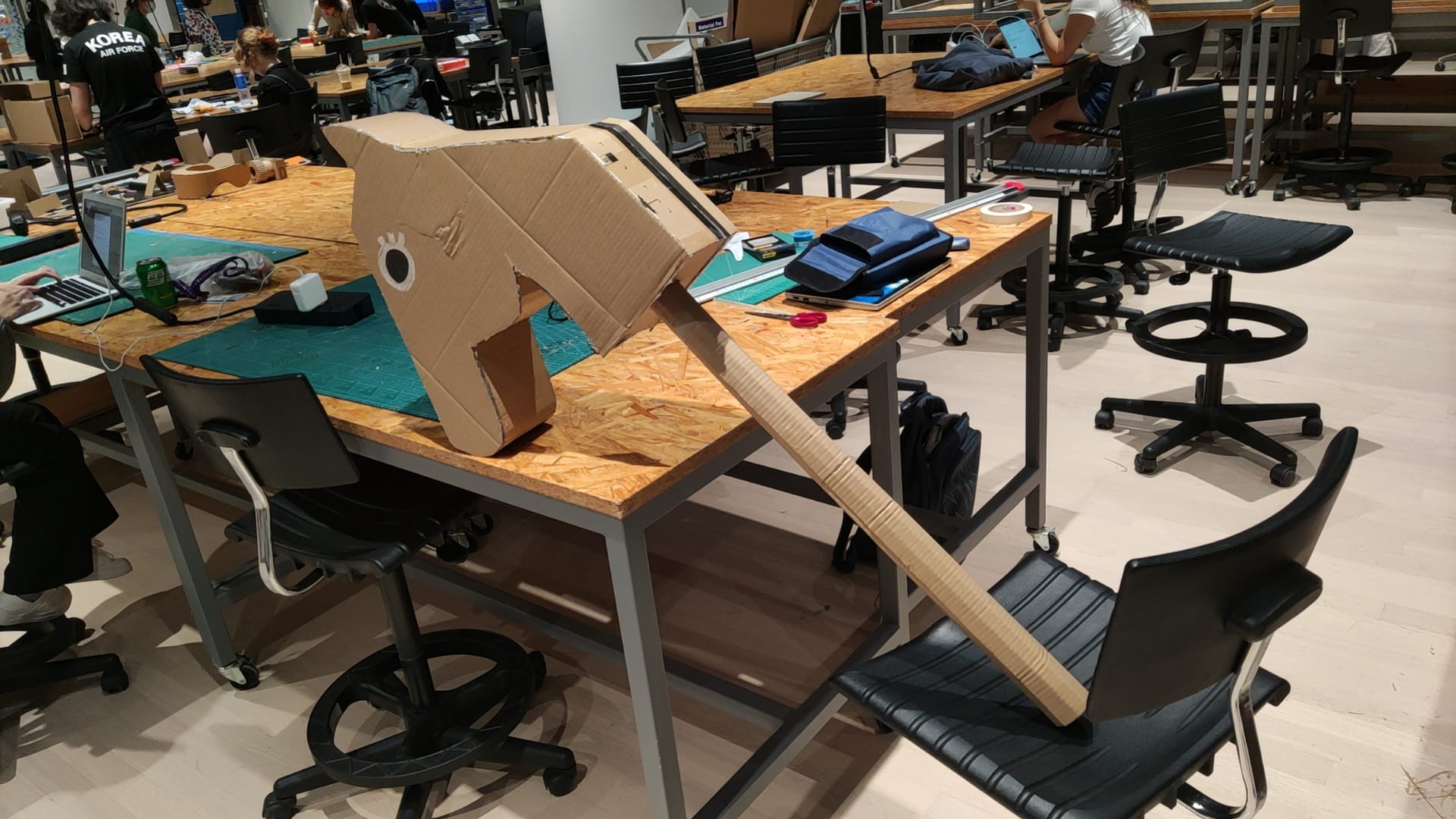
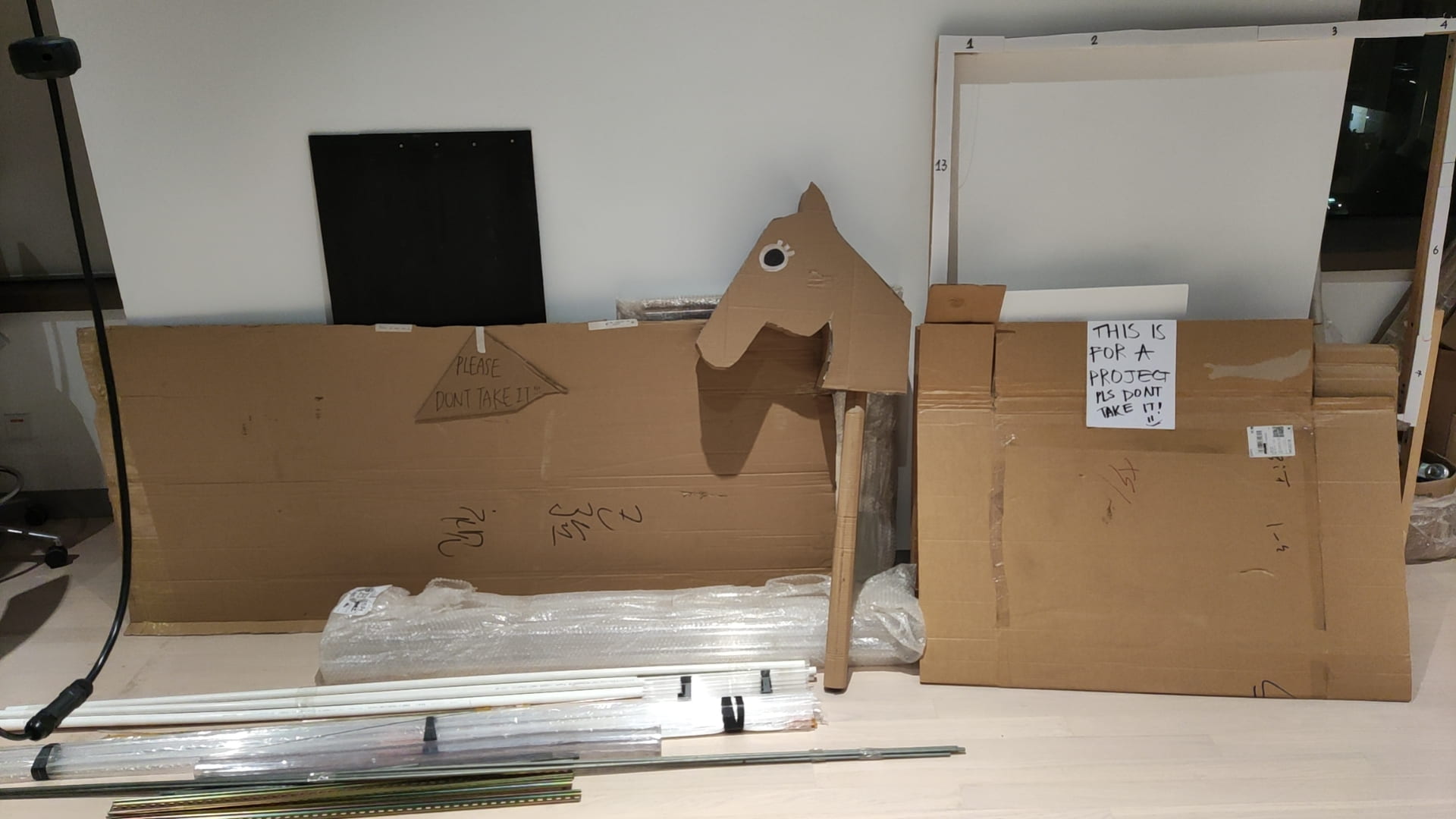
Then, we finished the horse an placed it in a corner of room N406.
In another day of the same week, five of us met with each other to finish the painting on the mirror. Before that, three of us spent huge effort on bringing the mirror from my dormitory to the campus, and though the process was really exhausting, we finally succeeded. When painting, we first overturned the mirror to make its back side on top, and then mixed some of the colors together in a cardboard box as if it was a pallet. The drawing process, however, was not smooth enough. Firstly, we did not find any black paint that could still be used, so we could only use the black marker to shadow the picture to make it more depressive. Secondly, as we did not find an appropriate color for the boy’s head and used flesh-color, the appearance of the boy was very strange, but we were not able to change it any longer. Thirdly, one of his legs was not of the same size as the other. Though not fully satisfied, we came up with some creative ideas to make the mirror more novel and appealing. In order to imitate the terrible living condition of the boy, we needed to add some trash on the bottom of the picture so as to add verisimilitude. However, instead of painting trash directly, one of our group members came up with the idea of sticking our leftovers, such as spitballs and small cardboard pieces, onto this side of the mirror. By doing this, the original flat surface became three-dimensional. This idea was so brilliant that it even received the approval of our professor!
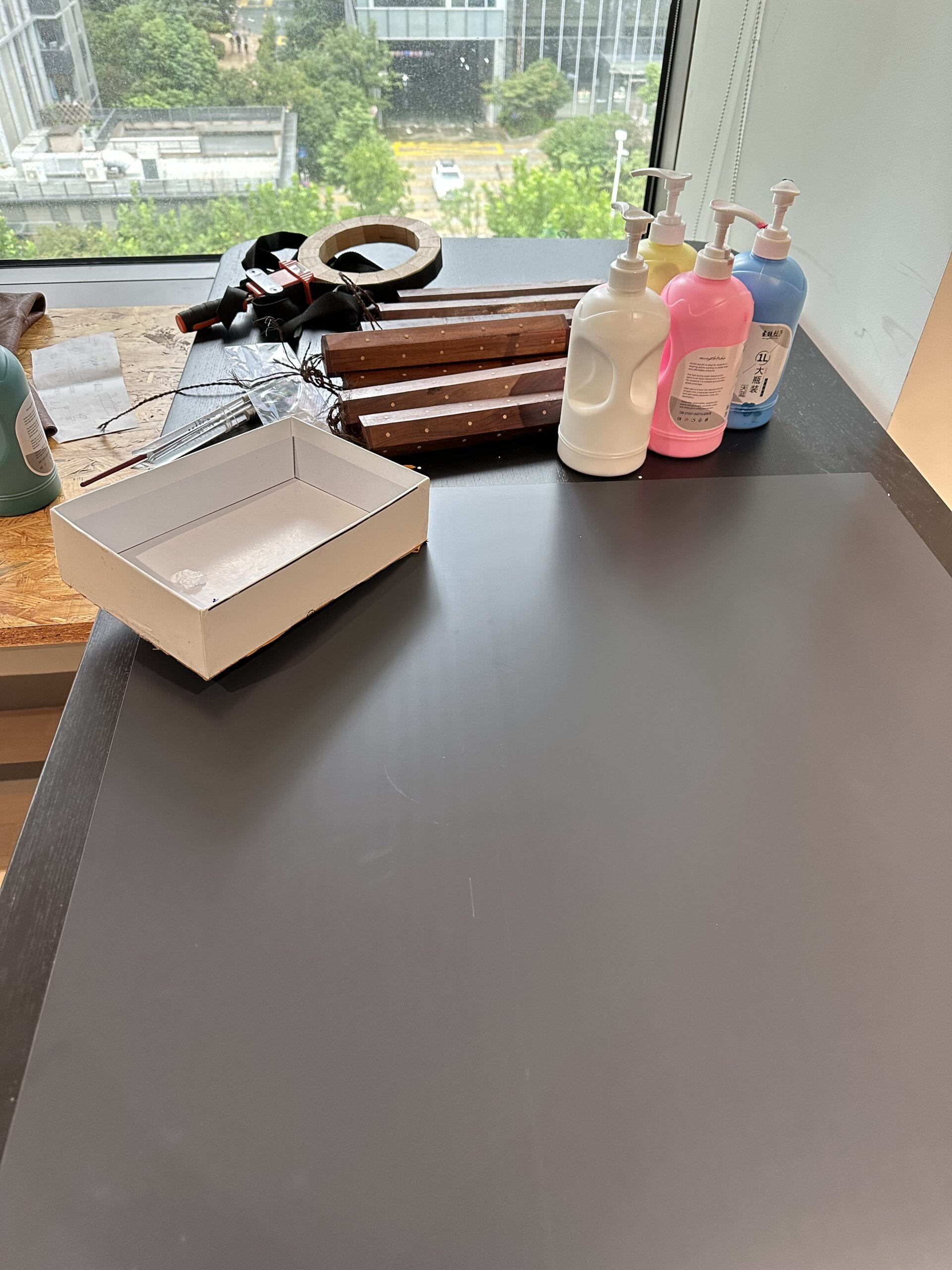
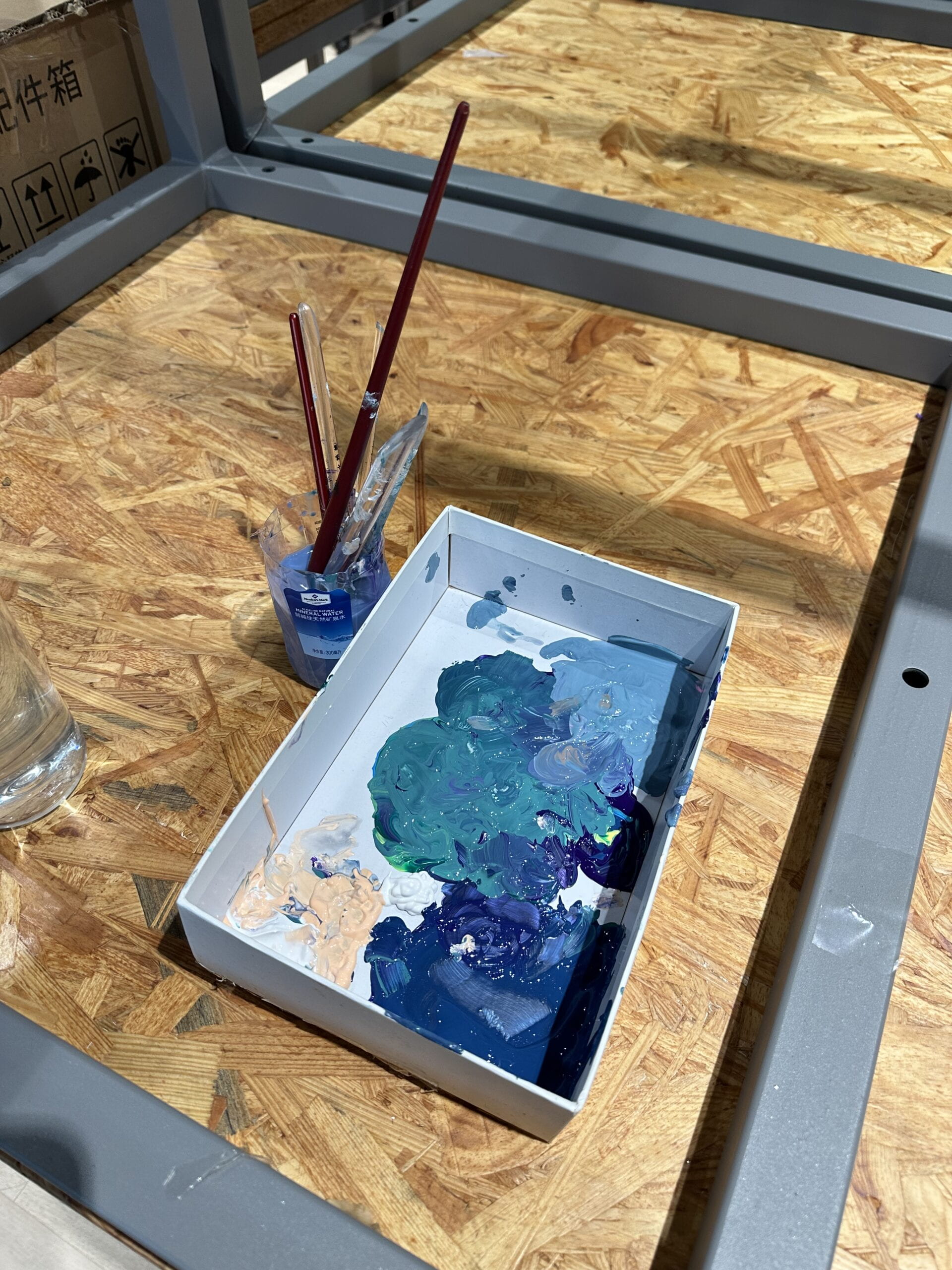
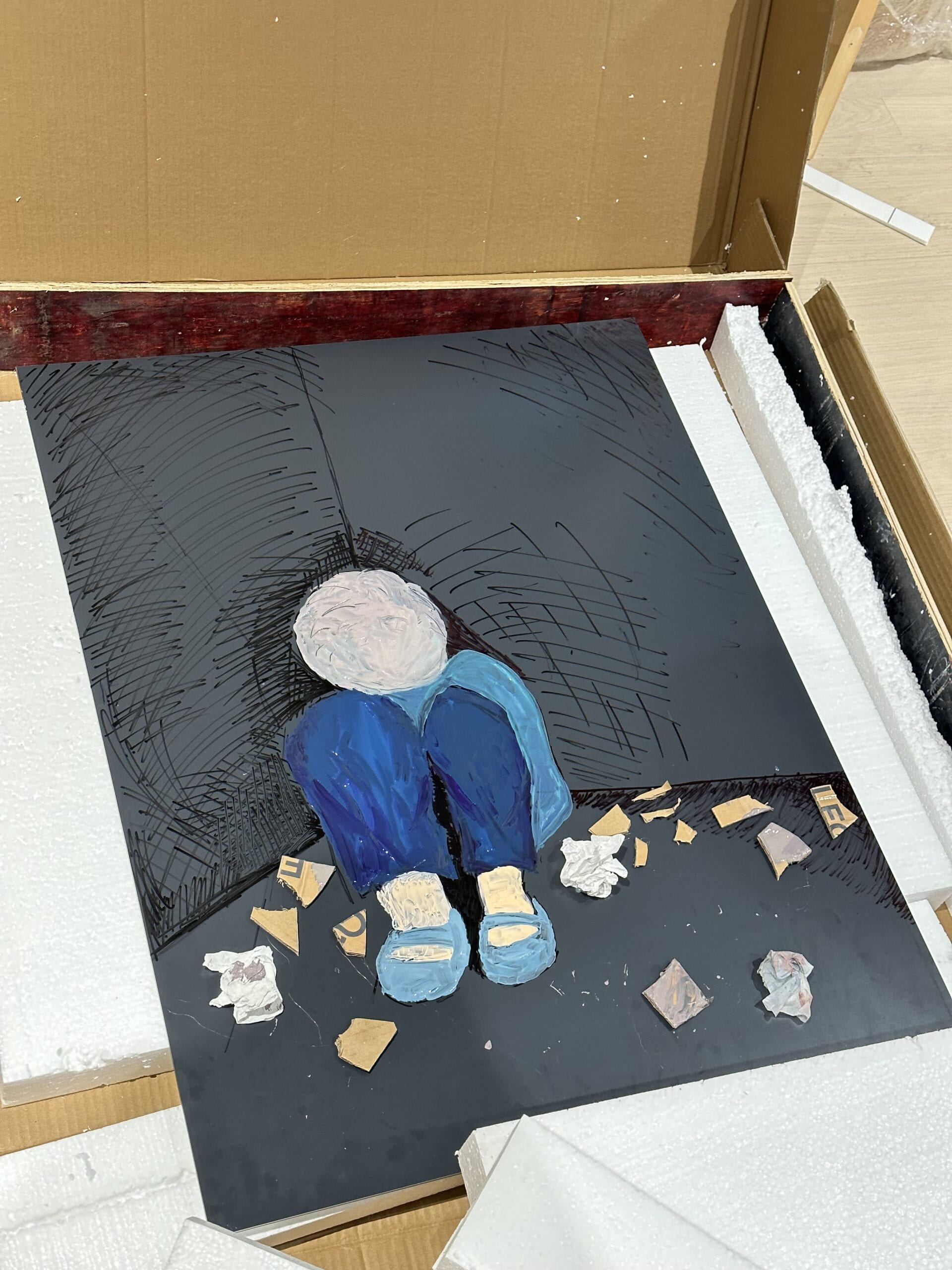
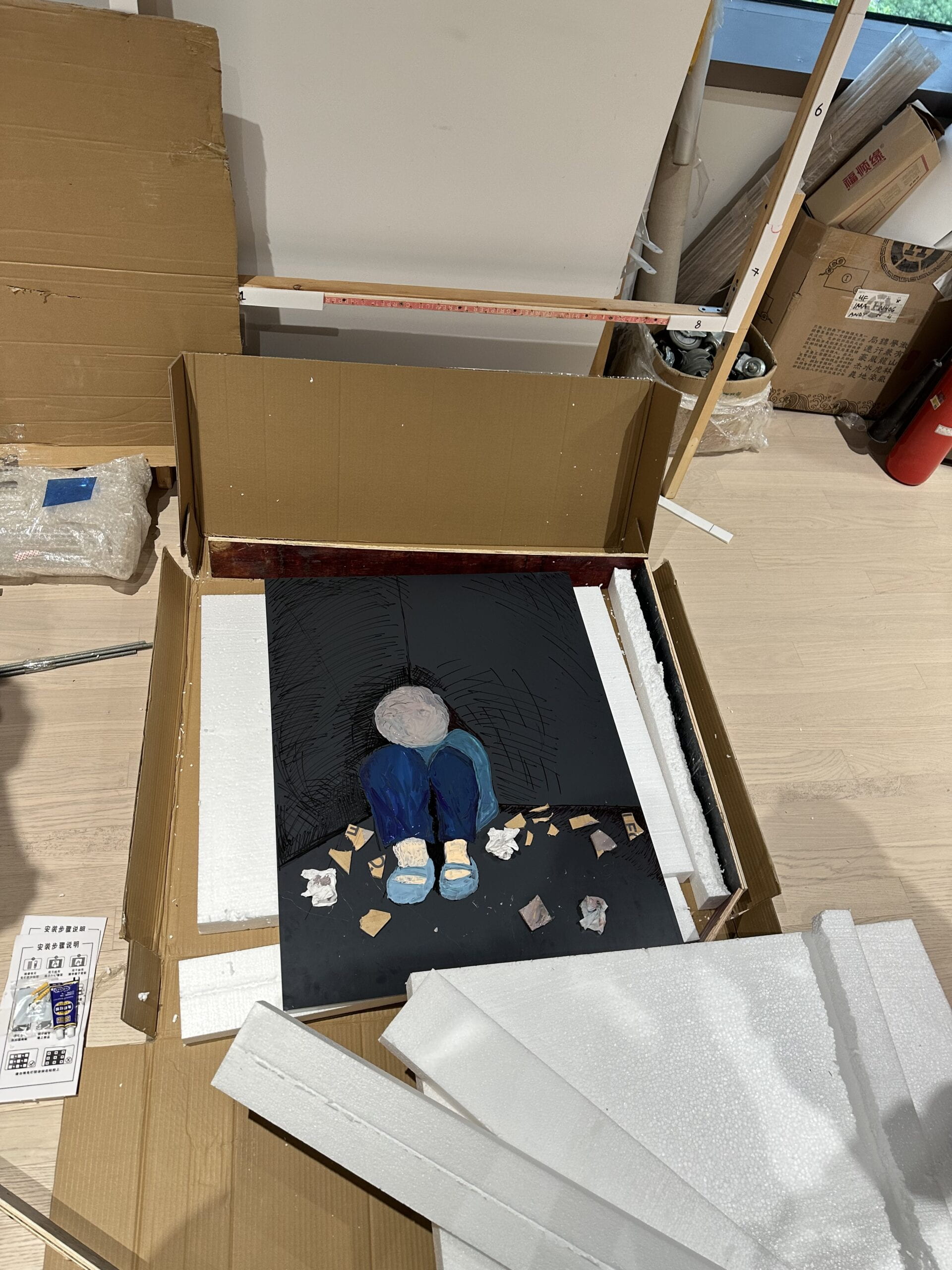
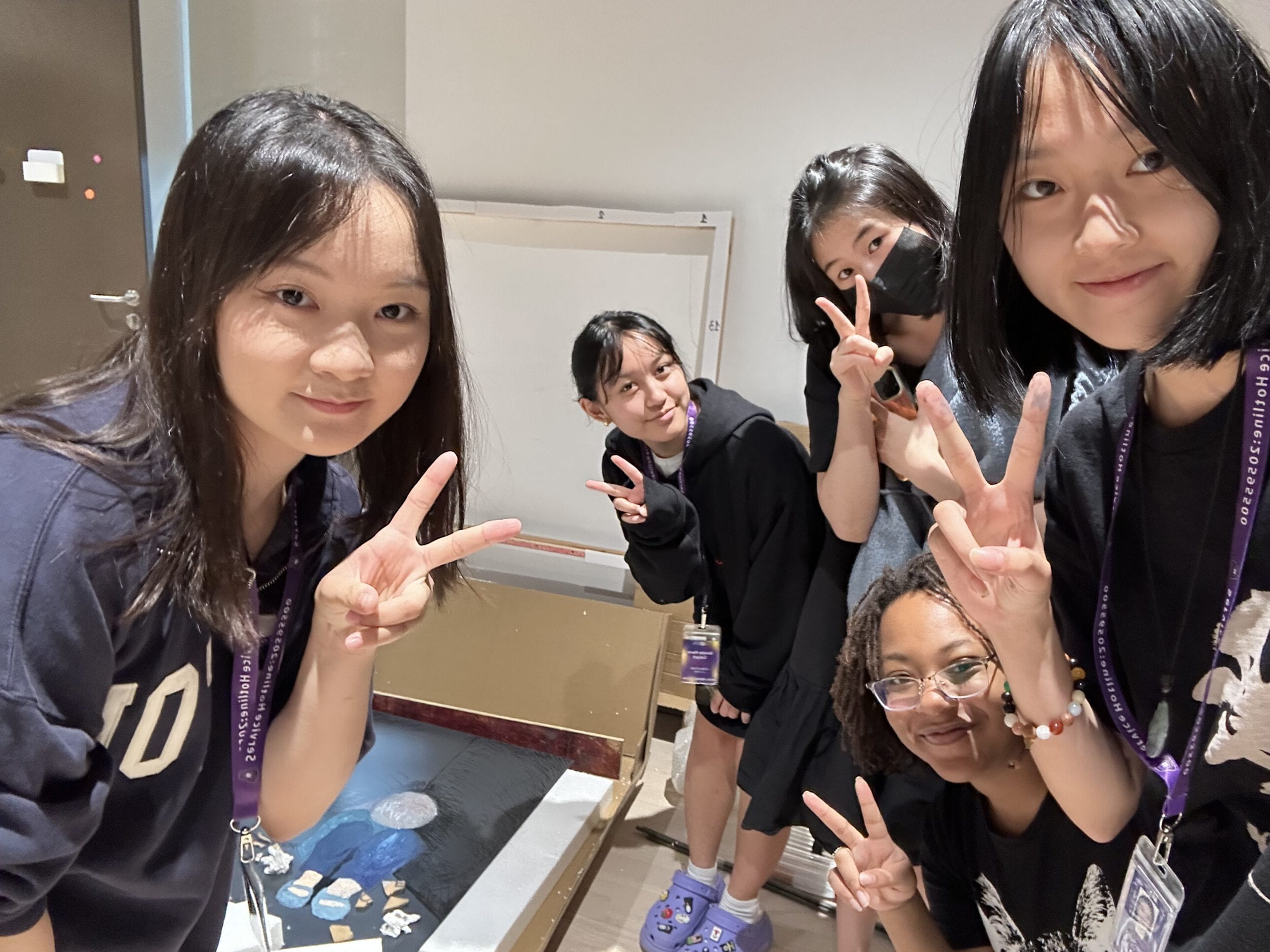
During this week we also rehearsed many times and most of us had succeeded in memorizing our own lines. We mainly rehearsed in the auditorium, and the process was of so much fun. All of us learned a lot when cooperating with each other, and we were confident before we started performing.
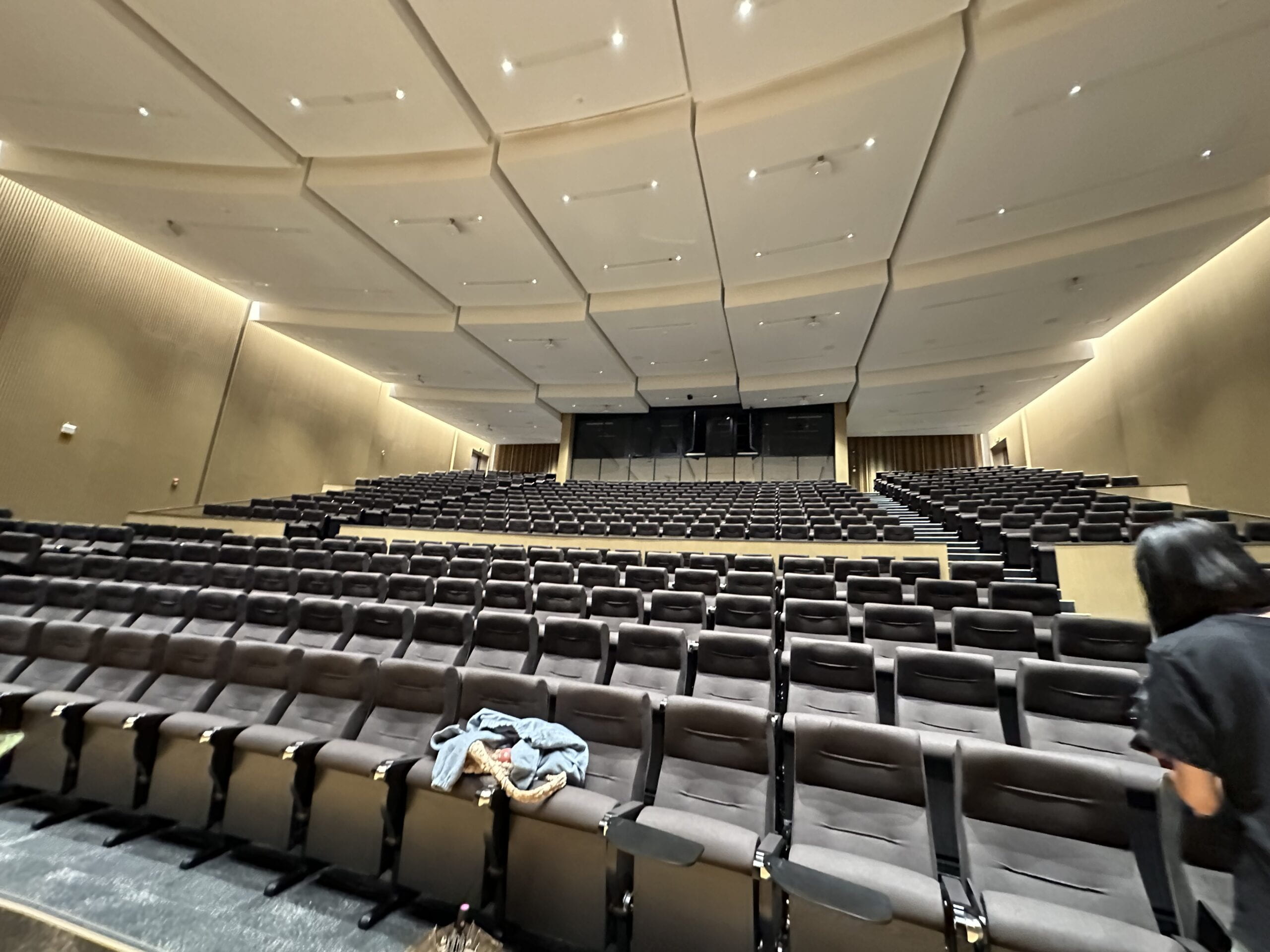
Finally, it came to the day when we should perform. Before that, I came up with the idea of using a revolving chair to hold the mirror so that it could be easier to be turned around to show its different sides, and also such chairs could be easily found. Thus, me and Eric, one of our group members, searched two floors to find an appropriate chair which was neither too big nor too small, and was able to hold the mirror vertically. We were lucky enough to find one and used the chair to deliver our mirror and the horse to the concert hall.
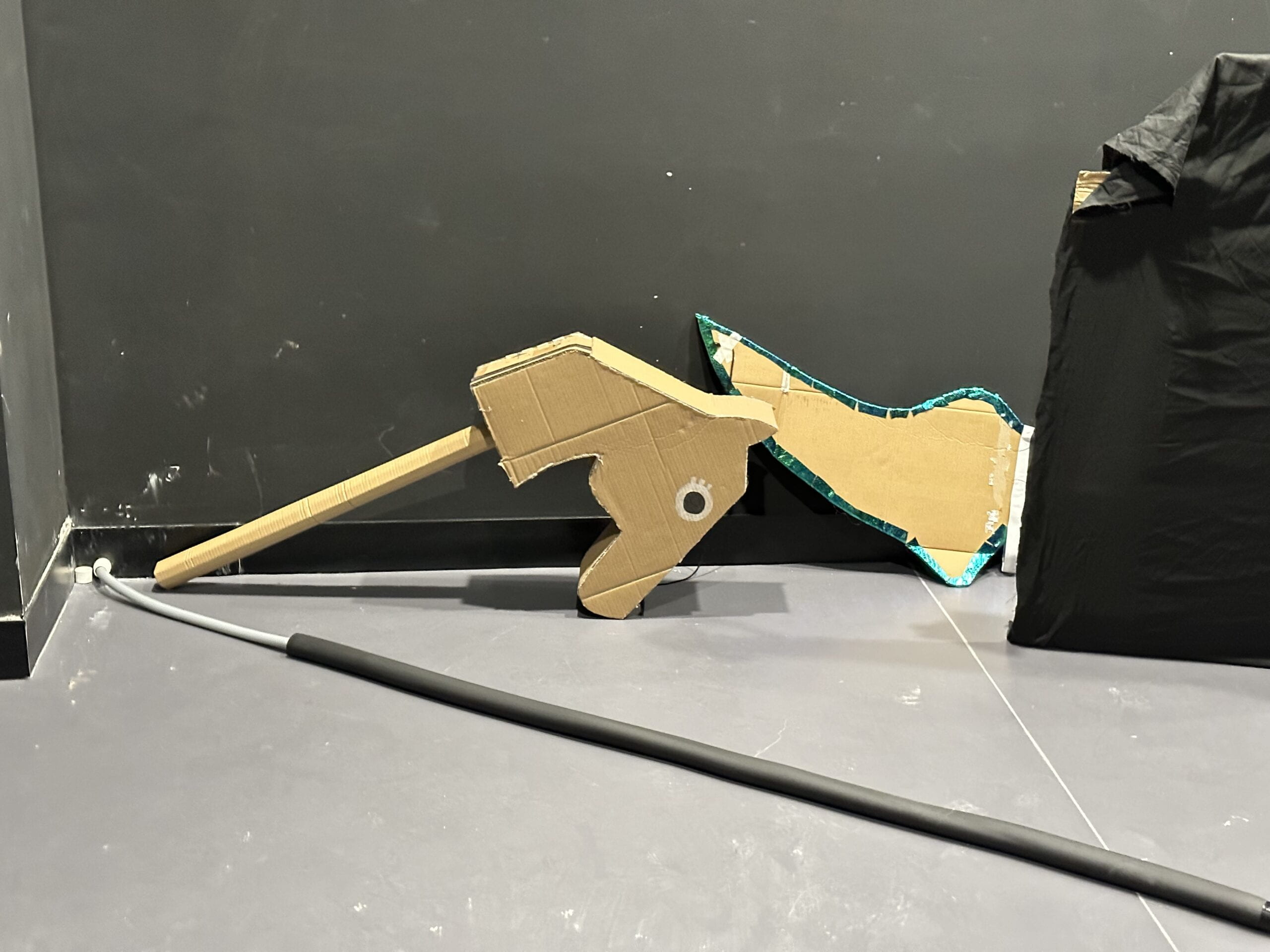
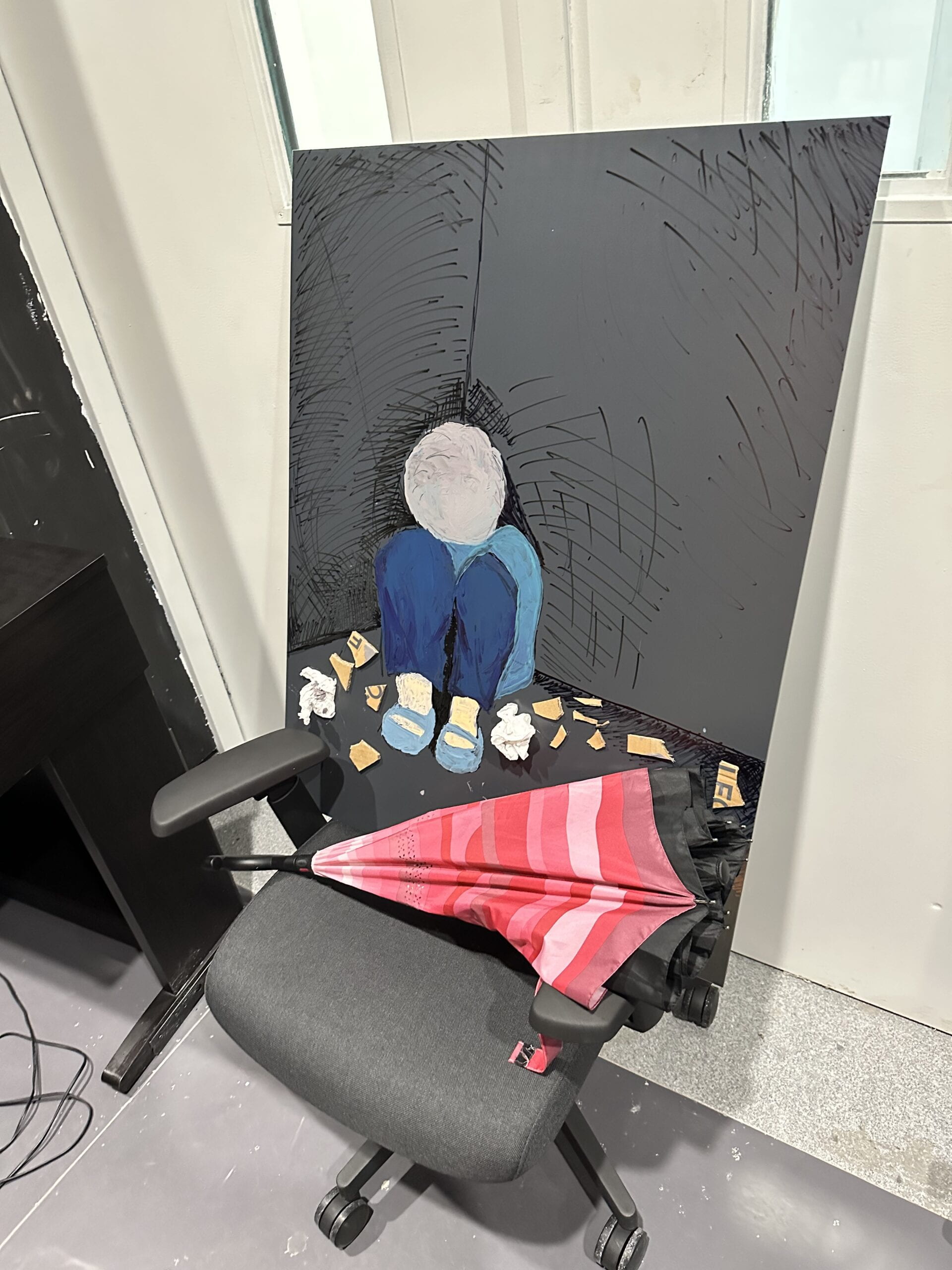
To my surprise, our performance was really successful. We received approval and praise from not only professors but also students, but we also received a question from my classmate. She asked us how was our project interactive, and though some of our group members answered the question well, it still stroke me that maybe we didn’t make our idea clear enough during the performance. Instead of direct introductions, we chose a more risky way of writing something like a drama script and didn’t explain our story directly. This may confuse people who hadn’t been engaged in our rehearsal, for they may not know that the function of this mirror was to intrigue the thoughts of the citizens in Omelas and our interaction was in a more automatic and spiritual way. This reminded me that maybe we could try to make our idea clearer by adding more suggestive lines in the conversations between people, so that it would be neither too blurry nor too direct. In general, we had such a good time together, and though our first project is definitely not perfect, we can keep learning and creating in the future!
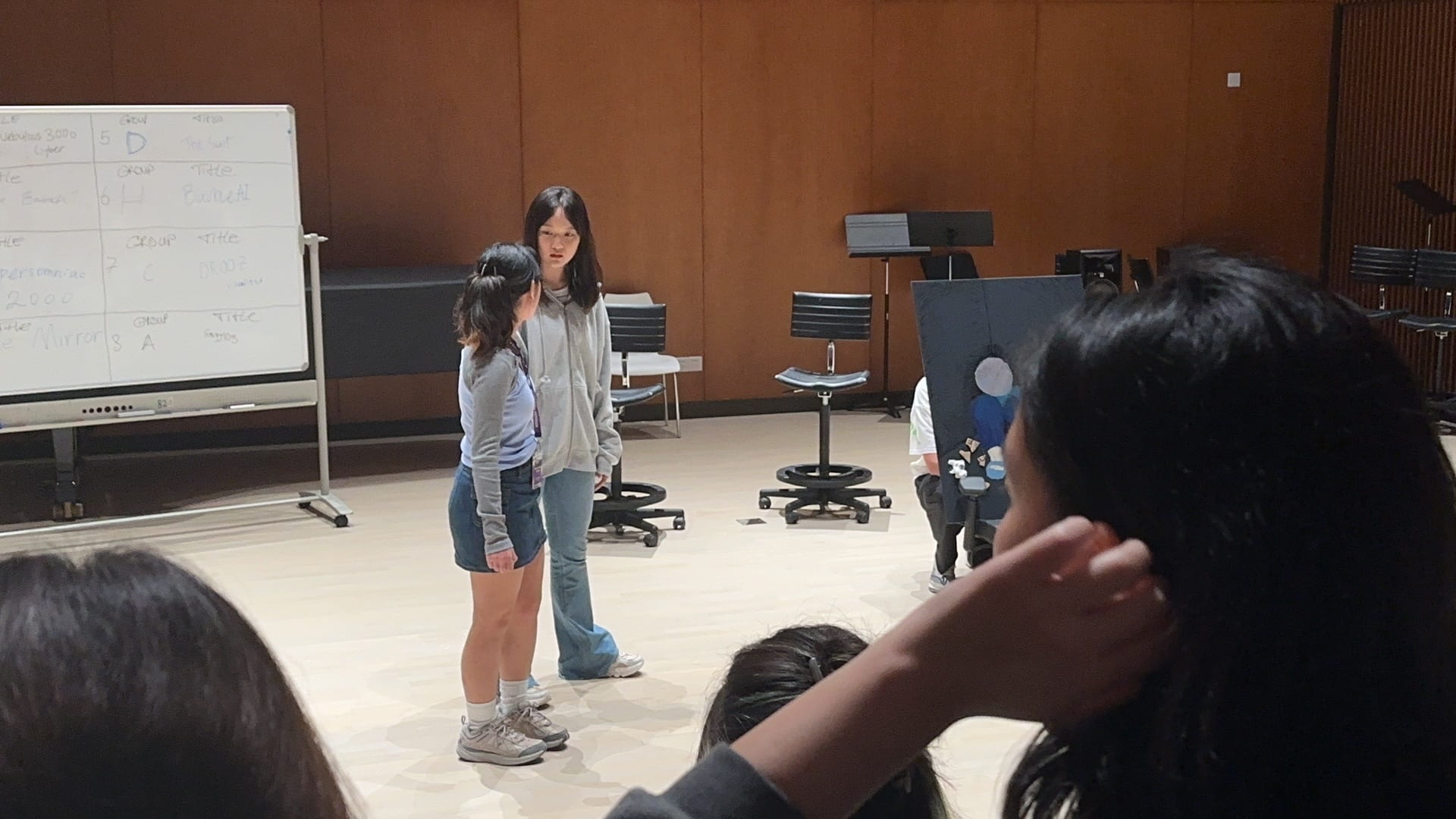
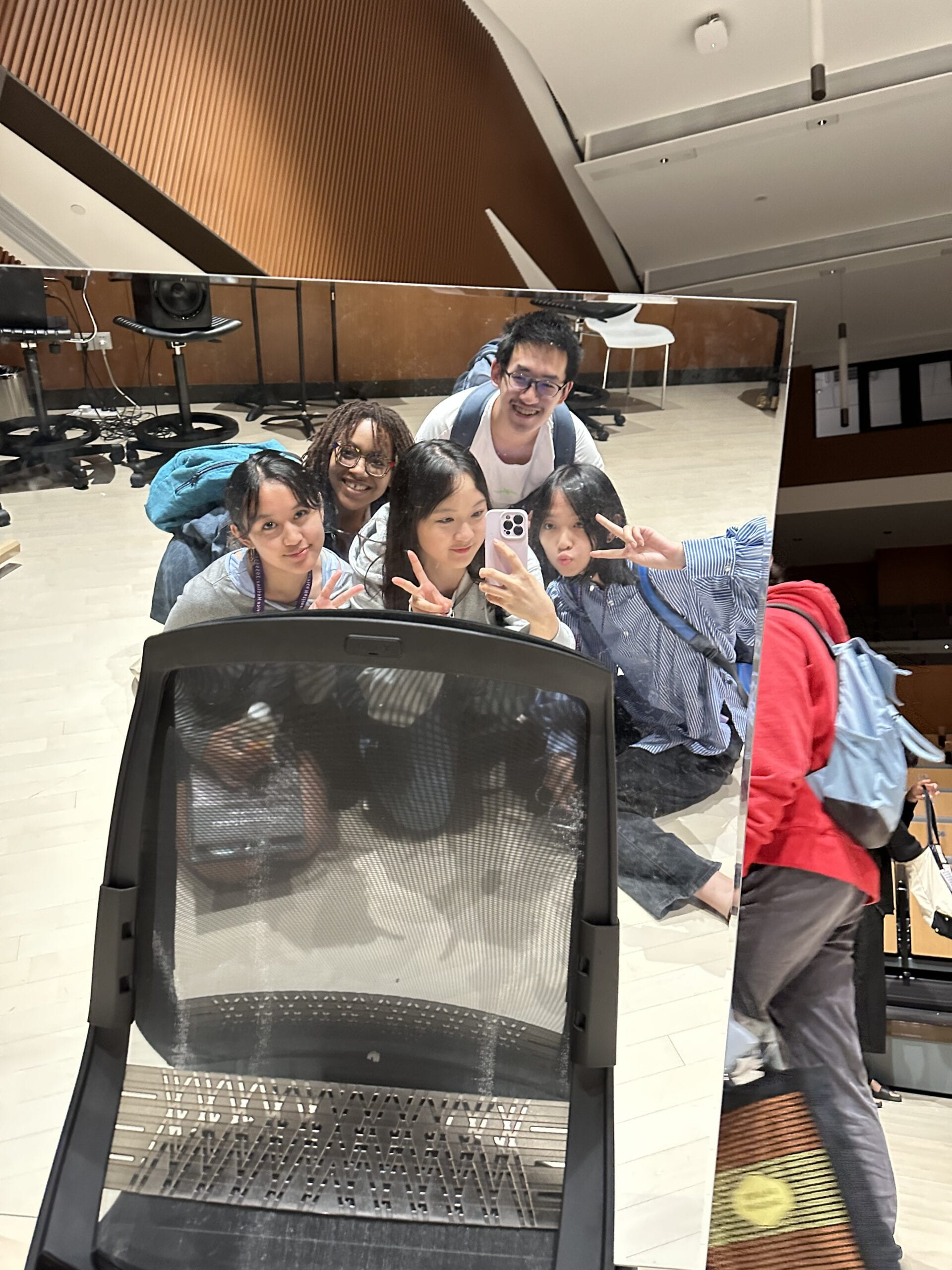
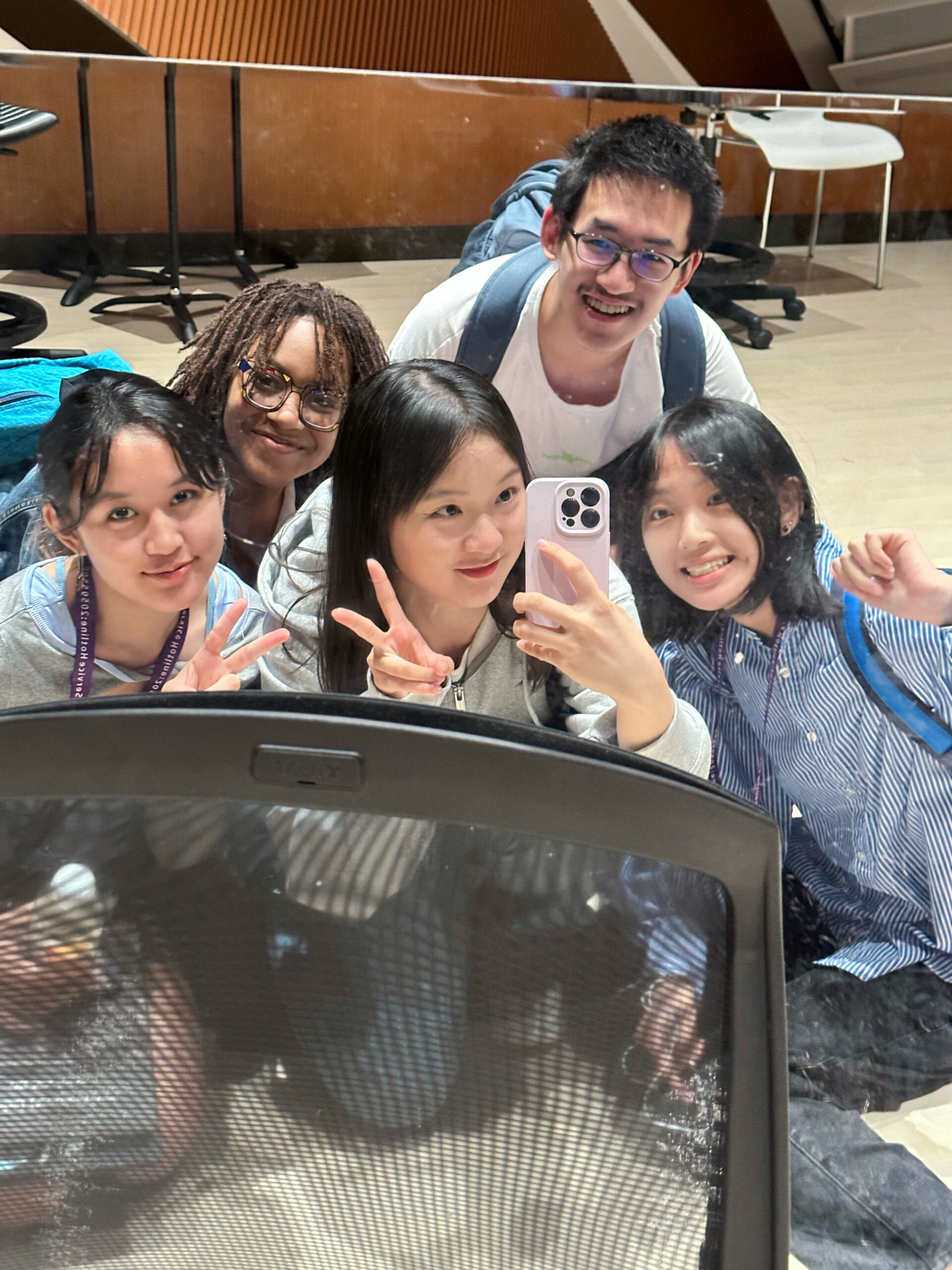
Just like any other artifacts, our immature project has its successes, and most importantly, failures. Its success may include that we acted out the play smoothly, better than every rehearsal we had before, and our idea of the mirror as well as the way we introduced and displayed it are approved and praised by our professor. Our teamwork is especially collaborative too, and each one of us participated actively and kept coming up with creative ideas on how to make our project better and more appealing. Nevertheless, just as I mentioned before, some of our audience could not understand our purpose of making the mirror , and neither did they know why it was interactive. As one of our main purposes is to show the project to our peers and explain to them about its functions, the problem should be treated seriously. In my opinion, we can add some suggestive lines in our script but not making them too direct. Besides, we can also try to make our project more delicate and evocative, for in my opinion another big problem of our project is that the mirror is too simple and plain compared to the artifacts from other groups.
During these two weeks when me and my group members worked together, I believe that all of us gained a better insight of group collaboration and how to make an interactive artifact together. As for myself, I took a lot of responsibilities even from the beginning. For example, I wrote emails to all the other five people at first because I was not in the same session as them, and I created a WeChat group chat so that we could communicate with each other better; during the making process, I was mainly responsible for gathering people and finding an appropriate meeting time for all of us, and I actively participated in different works and activities. For example, I helped make the horse in the cardboard prototyping workshop and I contributed a lot to the drawing on the mirror. I also came up with the idea of using a revolving chair to hold the mirror and I indeed found one together with another group member. All these works and responsibilities made me more skilled at collaborating with others, and the process enhanced my perception of art as well as my creativity. I was so proud of myself and our group, for all our communications are effective and harmonious, and I gained an unforgettable experience together with these lovely people.
When watching the performance of the other seven groups, I was impressed by another group’s idea and performance, and my further analysis and assessment can be seen below.
Barbie AI
This interactive artifact is a smart closet which can automatically pick appropriate clothes for its users according to the mood of the person as well as the weather. It provides thousands of different choices to its customer, which is appealing, but the problems may include wasting materials, being too expensive and so on.
In my opinion, Barbie AI met the criteria of the assignment well in general, for the group members acted out an example of how to use it in an attractive way, and the artifact is apparently interactive enough, for it includes a “conversation” between the customer and the closet — the closet can detect the mood of the customer and reply to it by picking appropriate clothes, and the customer has the action of walking in and out with different outfits and letting the closet detect her (his) thoughts. It is also reasonable to see a closet like this in the science fiction world described in the novel.
When it comes to the performance, I do think that their performance is clear, understandable and interesting, and it helped me understand the function of this artifact easily. All members of the group participated actively in this performance and the switching of people before and after the main character walked into the closet is really smart. Besides, the dress worn by one of the members is exactly the same as a picture on the closet displayed!
However, one thing that I am confused about this project is that it uses emotion reading, but as required in the instructions, the artifact cannot be operated by mind reading. In my opinion, either the project fails to meet the requirements or its group members did not explain the differences between emotion reading and mind reading. Maybe in the future, if the group wants to improve this artifact, they can try different methods to operate the closet instead of using emotion reading.
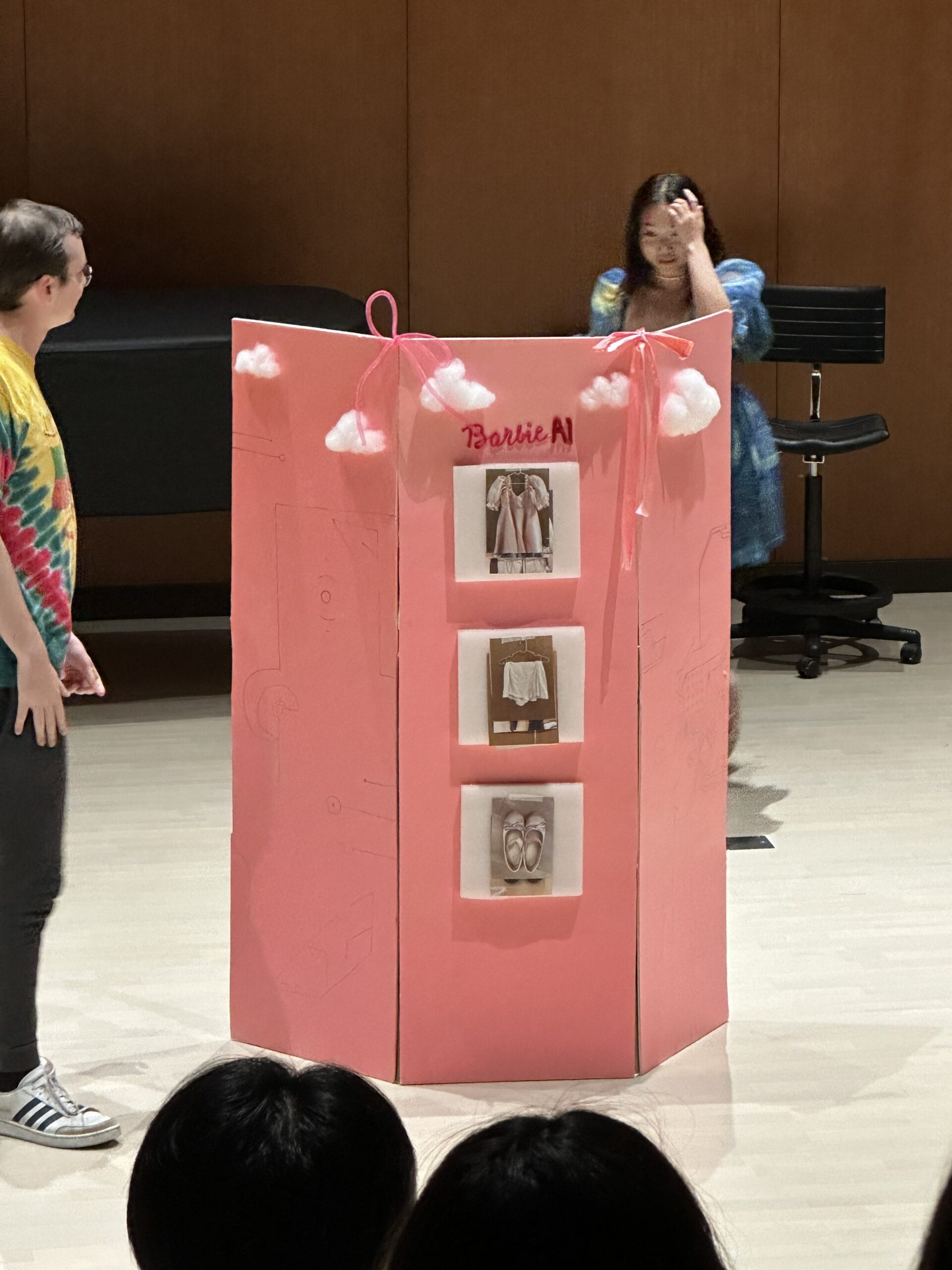
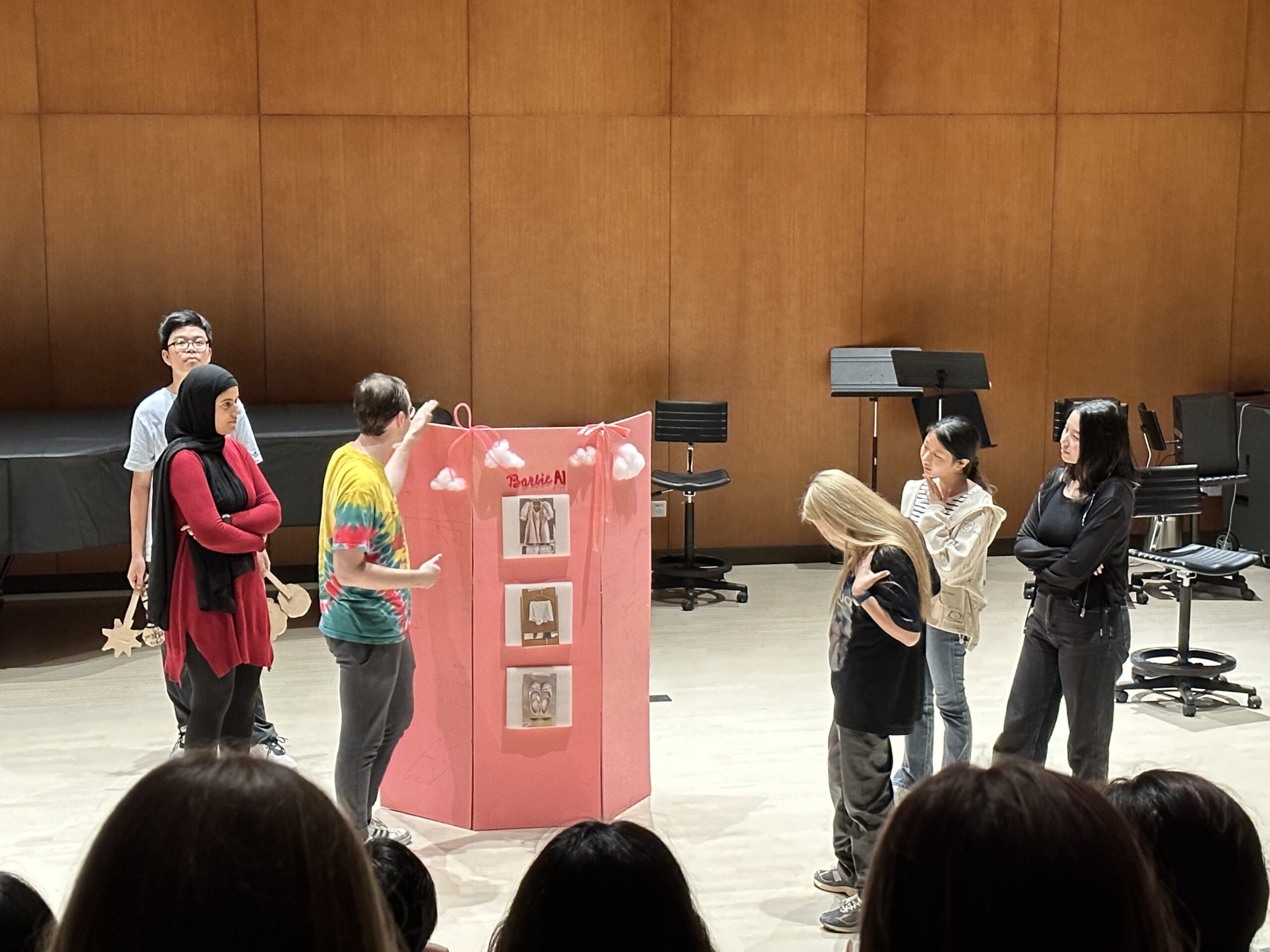
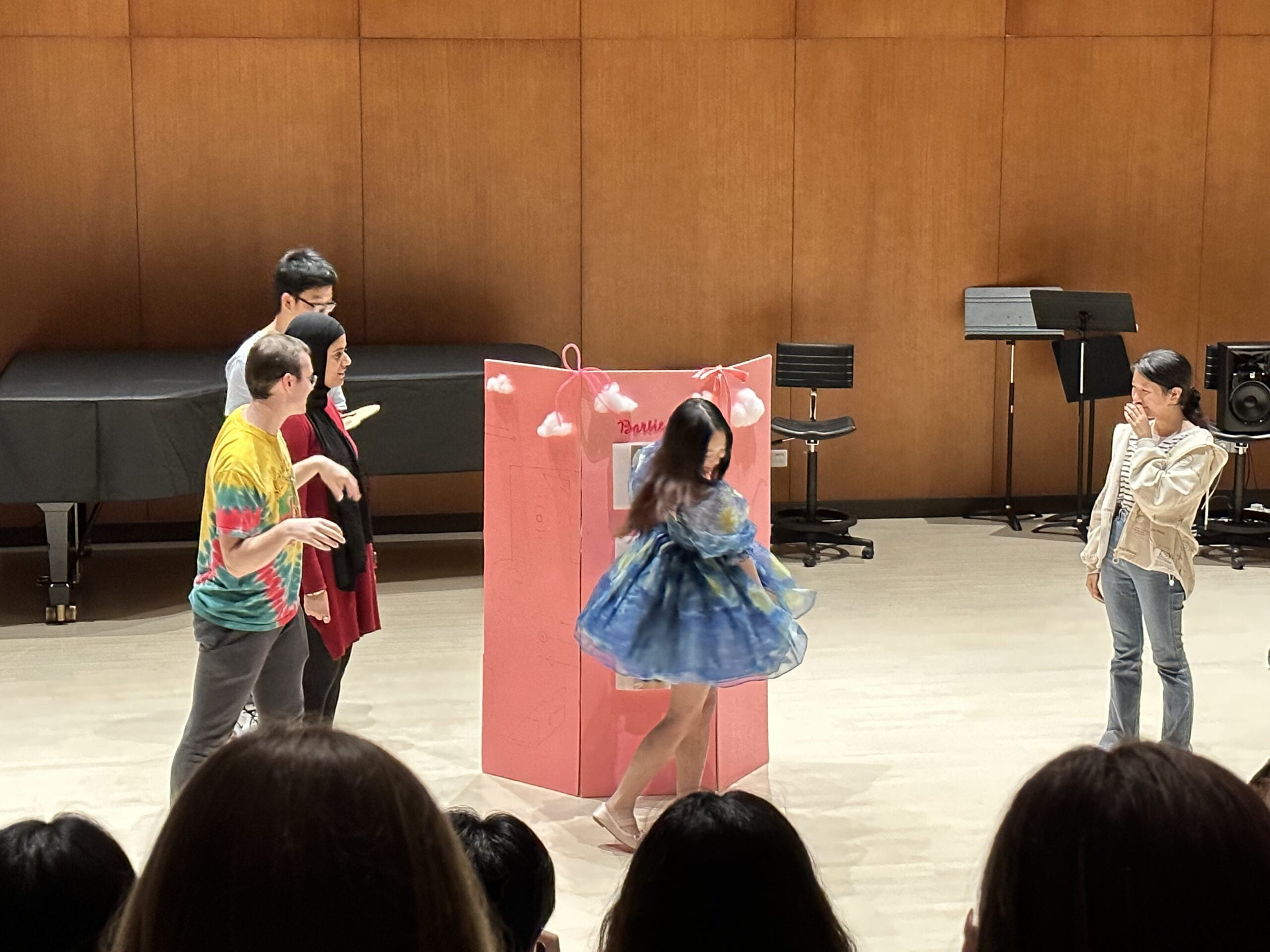

Leave a Reply